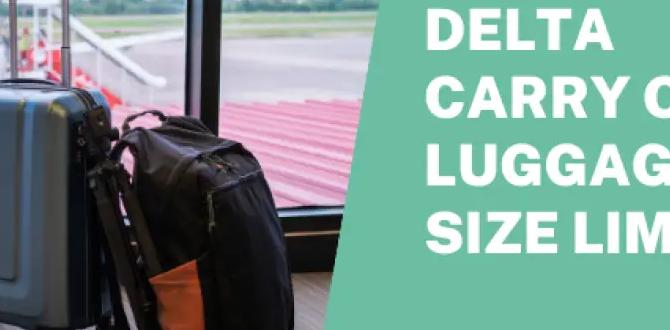Your best Bali island travel guide starts here with essential tips for a smooth, enjoyable trip, covering everything from packing essentials to local customs, ensuring you experience the magic of this Indonesian paradise with confidence and comfort.
Bali. The very name conjures images of emerald rice terraces, ancient temples, and sun-kissed beaches. It’s a destination that calls to adventurers, yogis, families, and anyone seeking a touch of paradise. But planning a trip to the Island of the Gods can feel a little overwhelming at first. Where do you go? What should you pack? How do you get around? Don’t worry, I’ve got you covered. This guide is crafted to make your Bali adventure as stress-free and joyful as possible, focusing on practical advice that every traveler, whether you’re a seasoned explorer or embarking on your first big trip, can use. We’ll break down the essentials, ensuring you pack smart, travel comfortably, and immerse yourself in Bali’s unique charm without missing a beat. Let’s dive into making your Bali dream a reality!
Bali Island Travel Guide: Essential Tips for First-Timers
Planning your first trip to Bali can be incredibly exciting. This guide is designed to simplify the process and equip you with the knowledge you need for a fantastic vacation. We’ll cover everything from understanding the best time to visit to packing the right gear and navigating the local culture.
When is the Best Time to Visit Bali?
Bali enjoys a tropical climate, meaning it’s warm year-round. However, there are distinct wet and dry seasons that can influence your holiday experience. Understanding these seasons can help you choose the perfect time to visit based on your preferences for weather and crowds.
Dry Season (April to September): This is generally considered the best time to visit Bali.
Pros: Sunny days, lower humidity, minimal rainfall. Ideal for beach activities, exploring temples, and outdoor adventures like hiking.
Cons: This is also peak tourist season, meaning more crowds and potentially higher prices for flights and accommodation.
Wet Season (October to March): Characterized by occasional heavy rain showers, usually in the afternoon or evening, followed by sunshine.
Pros: Fewer tourists, lush green landscapes, often lower prices. The rain can be refreshing, and it rarely ruins a full day of activities.
Cons: Higher humidity, potential for localized flooding, and ocean conditions might be choppier, affecting some water sports.
Shoulder Seasons:
The periods just before and after the peak seasons (April-May and September-October) often offer a great balance of good weather and fewer crowds.
Getting to and Around Bali: Your Transportation Guide
Once you’ve landed in Bali, navigating the island is part of the adventure. There are several convenient ways to get around, catering to different budgets and travel styles.
Getting from Ngurah Rai International Airport (DPS)
Upon arrival at Denpasar’s airport, you have a few options to reach your accommodation:
Airport Taxis: Official airport taxis are readily available. It’s best to use the metered taxis or pre-purchase a coupon at the official taxi counter inside the arrivals hall.
Ride-Sharing Apps: Apps like Grab and Gojek are very popular and often more affordable than taxis. You’ll need to note the designated pick-up zones outside the terminal.
Pre-booked Private Transfers: Many hotels offer airport pick-up services, which can be a stress-free option, especially if you’re arriving late or have a lot of luggage. This is also a great option for families traveling with young children or individuals who require extra support, such as those needing accessible transport or using adult or child diapers and requiring convenient arrangements.
Getting Around the Island
Scooter/Motorbike Rental: This is the most popular and often the most cost-effective way to explore, especially for solo travelers or couples. It offers flexibility and the freedom to stop wherever you please.
Important: You must have an international driving permit and wear a helmet. Traffic can be chaotic, so only attempt if you are an experienced rider.
Car Rental with Driver: For families, groups, or those who prefer comfort and safety, hiring a car with a local driver is an excellent choice. Drivers are knowledgeable about the island and can act as informal guides. Rates are usually per day and very reasonable.
Ride-Sharing Apps: Grab and Gojek are widely used for car and motorbike rides throughout Bali. They are convenient for short to medium distances.
Taxis: Metered taxis (like Blue Bird) are reliable for getting around towns. Always ensure the meter is used.
Online Bike/Car Booking Platforms: Besides Grab and Gojek, other local apps might be available.
Packing Essentials for Your Bali Adventure
Packing light but smart is key for a comfortable trip. Think breathable fabrics, sun protection, and items that can be mixed and matched.
Clothing
Lightweight, Breathable Fabrics: Cotton, linen, and rayon are perfect for Bali’s warm climate.
T-shirts and Tank Tops: Pack several for everyday wear.
Shorts and Skirts: Comfortable for walking and beach days.
Lightweight Trousers or Long Skirts/Dresses: Essential for visiting temples (shoulders and knees must be covered) and for cooler evenings.
Swimwear: You’ll want plenty of opportunities to enjoy Bali’s beautiful beaches and pools.
Sarong or Light Scarf: Incredibly versatile for covering up at temples, as a beach towel, or a light wrap.
Rain Jacket or Poncho: Especially if traveling during the wet season.
One Nicer Outfit: For evenings out at a nicer restaurant.
Footwear
Comfortable Sandals or Flip-Flops: For daily wear and beach trips.
Walking Shoes or Sneakers: If you plan on hiking or exploring extensively.
Water Shoes: Useful for rocky beaches or some water activities.
Health and Personal Care
Sunscreen (SPF 30+): Bali’s sun is strong! Reapply frequently.
Insect Repellent: Essential, especially for evenings and jungle areas.
After-sun Lotion or Aloe Vera: To soothe any sunburns.
Basic First-Aid Kit: Including plasters, antiseptic wipes, pain relievers, and any personal medications.
Hand Sanitizer: For when soap and water aren’t available.
Travel-sized Toiletries: Shampoo, conditioner, soap, toothbrush, toothpaste, etc.
Diabetic Supplies / Personal Hygiene Items: For individuals managing health conditions, it’s crucial to pack any necessary supplies, such as adult diapers or child diapers, ensuring you have an adequate supply for your trip duration. Consider discreet and comfortable options like adult diapers designed for travel, or pre-portioned child diapers for easy packing. This ensures comfort and confidence throughout your travels.
Electronics and Accessories
Universal Travel Adapter: Indonesia uses Type C and Type F plugs (two round pins).
Portable Power Bank: To keep your devices charged on the go.
Camera and Extra Memory Cards: To capture those stunning Bali memories.
Waterproof Phone Case: For beach days and unexpected rain.
Dry Bag: Highly recommended for boat trips or activities near water.
Sunglasses and Hat: For sun protection.
Daypack or Small Backpack: For carrying essentials during excursions.
Understanding Bali’s Culture and Etiquette
Respecting local customs will greatly enhance your travel experience and ensure positive interactions with the Balinese people.
Dress Modestly: When visiting temples and rural areas, cover your shoulders and knees. Many temples offer sarongs for rent or include them with your entrance fee.
Use Your Right Hand: When giving or receiving things, or shaking hands, always use your right hand, as the left hand is traditionally considered unclean.
Keep Your Cool: Balinese culture is generally calm and polite. Avoid loud arguments or aggressive behavior.
Temple Etiquette:
Always wear a sarong and sash (often provided or rentable).
Do not point your feet at any religious artifacts or people.
Do not disturb ceremonies.
Do not touch sacred offerings.
Respect for Elders: Always show respect to older people.
The Peraturan Menteri Pertanian No. 71 Tahun 2018 outlines regulations concerning agriculture, but understanding local Peraturan Daerah (Perda) or regional regulations can also be helpful when interacting with communities. While these are official government documents, observing and respecting local traditions is paramount.
Food and Drink in Bali: What to Try and What to Avoid
Balinese cuisine is a delightful explosion of flavors. From street food to fine dining, there’s something for everyone.
Must-Try Balinese Dishes
Nasi Goreng: Indonesian fried rice, a staple and a delicious choice.
Mie Goreng: Indonesian fried noodles.
Sate Lilit: Minced seafood or meat satay, often grilled on lemongrass skewers.
Babi Guling: Suckling pig, a famous Balinese delicacy.
Lawar: A traditional mix of vegetables, coconut, and minced meat, often served with rice.
Gado-Gado: A vegetable salad with peanut sauce dressing.
Drinking Water
Bottled Water is Key: Never drink tap water. Always buy sealed, bottled water.
Ice: Ice in restaurants and cafes is usually made from purified water and is generally safe. If in doubt, stick to bottled drinks.
Coconut Water: Fresh and revitalizing, readily available from street vendors.
Food Safety Tips
Eat at Busy Places: Restaurants and warungs (local eateries) with high turnover are usually a safer bet for freshness.
Look for Cleanliness: Observe the general tidiness of the food preparation area.
Cooked Food: Ensure hot food is served hot and cold food is served cold.
Important Health and Safety Tips for Bali
Your well-being is paramount to enjoying your trip. Here are some essential health and safety tips:
Vaccinations: Consult your doctor or a travel clinic well in advance of your trip to discuss recommended vaccinations and health precautions for Indonesia.
Travel Insurance: This is non-negotiable. Ensure your policy covers medical emergencies, hospital stays, and repatriation. The U.S. Department of State also advises on travel advisories for Indonesia.
Sun Protection: Reapply sunscreen regularly, wear a hat, and stay hydrated.
Mosquitoes: Use repellent, especially at dawn and dusk, to prevent mosquito-borne illnesses like Dengue fever.
Food and Water Safety: As mentioned, stick to bottled water and be discerning about where you eat.
Emergency Numbers: Know the local emergency numbers for police and ambulance.
Respect the Ocean: Be aware of rip currents and strong waves, especially at popular surf beaches. Heed any warning flags.
Personal Belongings: Be mindful of your belongings, particularly in crowded areas, to avoid petty theft.
Diaper Needs: For travelers who use adult or child diapers, always pack more than you think you’ll need, along with any necessary wipes and barrier creams. Having a discreet travel bag for these items can provide privacy and convenience. Consider brands known for their absorbency and comfort for long travel days or extended excursions.
Money Matters: Currency, Budgeting, and Tipping in Bali
Understanding local currency and budgeting will help you manage your expenses effectively.
Currency: The local currency is the Indonesian Rupiah (IDR).
ATMs: ATMs are widely available in tourist areas. Always use ATMs attached to banks for security. Be aware of withdrawal limits.
Credit Cards: Most hotels, larger restaurants, and shops accept credit cards. However, smaller warungs and local markets will only accept cash.
Carrying Cash: It’s advisable to carry some cash for smaller purchases, local transport, and tips.
Bargaining: In markets and for some services, bargaining is expected. Do so politely and with a smile. Start at around 50% of the asking price and meet somewhere in the middle.
Tipping: Tipping is not mandatory in Bali, but it is appreciated for good service. A small tip (5-10%) for restaurant staff or drivers is common. Many restaurants add a service charge to the bill.
Staying Connected: SIM Cards and Wi-Fi in Bali
Keeping in touch is easy once you know how.
Local SIM Cards: Purchasing a local SIM card upon arrival is very affordable and gives you a data allowance for maps, communication, and research. Telkomsel and XL Axiata are popular reputable providers. You can buy them at the airport or in local shops.
Wi-Fi: Most hotels, cafes, and restaurants offer free Wi-Fi. The connection speed can vary.
Offline Maps: Download offline maps of Bali on your phone using Google Maps or apps like Maps.me before you arrive. This is incredibly helpful when Wi-Fi is spotty or unavailable.
Essential Phrases for Bali
Learning a few basic Indonesian or Balinese phrases will go a long way in connecting with locals and showing respect.
Hello: Halo / Om Swastiastu (Balinese greeting)
Thank You: Terima Kasih
Please: Tolong / SIlakan
Yes: Ya
No: Tidak
Excuse Me: Permisi
Delicious: Enak
How much?: Berapa harganya?
I want…: Saya mau…
Accommodation Options in Bali
Bali offers a diverse range of places to stay, from luxury villas to budget-friendly guesthouses.
High-End Resorts and Villas: For those seeking luxury and pampering, Bali has world-class resorts and private villas with stunning views and amenities.
Boutique Hotels: Mid-range options offering stylish comfort and personalized service.
Guesthouses (Losmen): Budget-friendly, often family-run accommodations providing a more local experience.
Hostels: Popular among backpackers and solo travelers, offering dorms and private rooms at low prices.
When choosing accommodation, consider its location relative to the activities you plan to do and its proximity to transportation options. If you require specific amenities for personal care, such as extra space or privacy for changing adult or child diapers, look for hotels that offer larger rooms or suites.
Must-Visit Areas in Bali
While the entire island is beautiful, some areas are particularly popular for different reasons:
| Area | Vibe & Best For |
| :———— | :—————————————————- |
| Ubud | Cultural heart, yoga, wellness, rice paddies, art |
| Seminyak | Trendy boutiques, upscale dining, beach clubs, nightlife |
| Canggu | Surfing, bohemian vibe, trendy cafes, digital nomads |
| Kuta | Lively nightlife, surfing lessons, budget travelers |
| Uluwatu | Dramatic cliff-top temples, surfing, stunning beaches |
| Nusa Islands| Snorkeling, diving, pristine beaches (e.g., Nusa Penida, Lembongan) |
When Comfort is Key: Travel Comfort Solutions
For any traveler, comfort is paramount, and for some, it requires specific considerations.
Travel Pillows: An essential for long flights or car journeys.
Comfortable Clothing: As mentioned, breathable fabrics are a must.
Hydration: Keep a reusable water bottle handy and stay hydrated.
Accessibility: If you require specific assistance, research accommodations and transport that cater to your needs. For example, if you need to manage incontinence, readily available and discreet adult or child diapers can make a significant difference to your comfort and confidence. Having easy access to these supplies allows for more freedom to explore without worry.
* Pacing Yourself: Don’t try to cram too much into one day. Allow time for rest and relaxation.
—
Frequently Asked Questions About Traveling to Bali
Q1: Do I need a visa to visit Bali?
A1: Visa requirements depend on your nationality and the length of your stay. Many nationalities can get a visa on arrival for short tourist stays (up to 30 days, sometimes extendable). It’s always best to check the latest requirements with the Indonesian Embassy or Consulate in your country before you travel.
Q2: Is it safe to drink the tap water in Bali?
A2: No, it is not safe to drink tap water in Bali. Always drink bottled water. Ice in reputable establishments is usually made from purified water and is safe.
Q3: How much money should I budget for a trip to Bali?
A3: Bali can cater to all budgets. For a mid-range traveler, budgeting around $50-$80 USD per person per day (excluding flights and accommodation) is a good starting point, covering food, transport, activities, and some shopping. Budget travelers can spend less, while luxury travelers will spend more.
Q4: What are some common scams to watch out for in Bali?
A4: Common scams include inflated taxi fares, fake gemstone or pearl sellers, and sometimes “money changers” offering very good rates but short-changing you. Always use official money changers or ATMs, and agree on taxi fares or ensure the meter is used.</p






